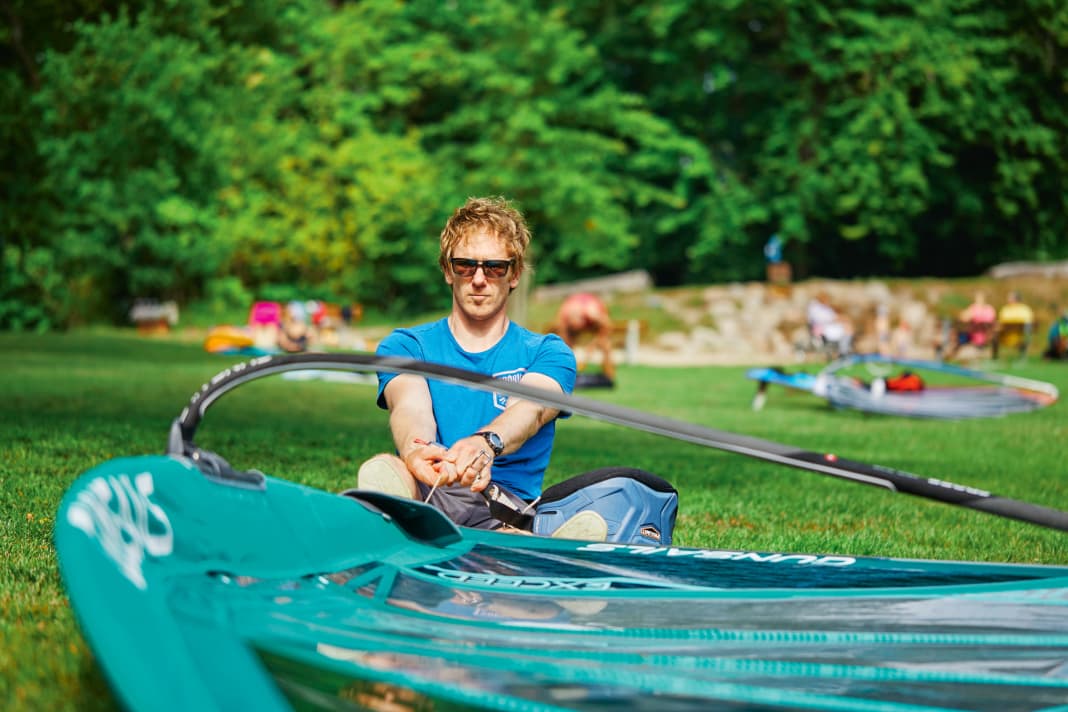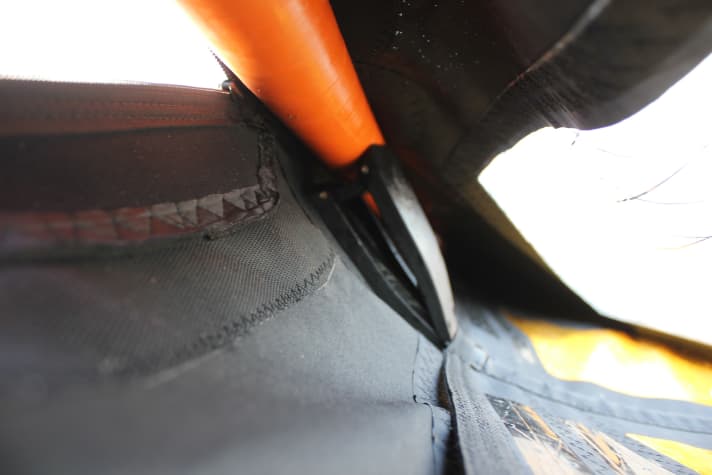





They spend their lives hidden away in the depths of the mast sleeve, but still have an enormous influence on the handling characteristics and handling of a sail: camber inducers, or camber for short. Anyone rigging such a sail for the first time may be annoyed by the stubborn plastic braces. Once you've ridden the sail for the first time, you'll soon forget all the fiddling about when setting it up. So that the moment of happiness sets in even sooner, we show you tips and tricks for camber sails!
In this article:
What is a camber in a windsurf sail?
Cambers are braces that sit in the mast sleeve at the end of the batten and "grip" around a third of the mast. Due to the tension, they push the sail in one direction and thus form a profile in the sail even without wind pressure. During manoeuvres, the profile must be brought to turn with a strong pull on the sail - a crucial point in the function of the camber. They have small balls or rollers to facilitate rotation during manoeuvres. The so-called "spacers", small plastic battens that can be stacked or removed, sit between the battens and the camber. If your cambers only rotate under the threat of force, you can remove one or more spacers to reduce the contact pressure. If, on the other hand, the camber keeps popping off unintentionally, add one or more spacers.

How camber sails are set up
Rigging camber sails is a little different from handling "normal" sails. The set-up works with this sequence:
- Thread the mast into the mast sleeve "concertina style" and make sure that the mast is threaded above the camber.
- Adjust the extension and pre-tension the luff moderately
- Adjust the boom to the specified length and mount it on the mast
- Push the outhaul rope through with a strong pull. This pulls the battens away from the mast, which is the basic requirement for folding the camber.
- Fold up the camber: Apply pressure to the camber from above and fold the camber in. Most brands print a marking to help you press in the right place. Zips or openings make access easier.
- Only when the camber is folded do you pull fully on the luff. The leech now wrinkles (loose leech). Printed markings help you to find the ideal trim. There is now also significantly less tension on the outhaul rope than at the beginning due to the stronger bend in the mast.
- Fine tuning: As a general rule, most of the pull is always on the luff. You can therefore pull firmly here until the required amount of loose leech is visible at the top of the sail. As a rule, you only work with moderate tension on the boom so as not to kill the sail profile - in light winds, a sail can sometimes almost touch the leeward side of the boom.
You can also see all the steps in the gallery above!
surf tip: If the camber does not fold, pull a little harder on the outhaul rope and reduce the downhaul rope tension! Reverse problem: The camber can be folded easily but immediately pops off again? Then increase the downhaul rope tension slightly before folding!
Set up the sail without camber
Sails without camber (e.g. wave, freestyle, freemove or no-cam freeride) are much less complicated to handle. Such sails are rigged as follows:
- Slide the mast into the mast sleeve, adjust the extension to fit
- Thread in the downhaul rope without crossing the rope and tension the luff
- Attaching the boom to the mast
- Pull outhaul rope tight with moderate tension
